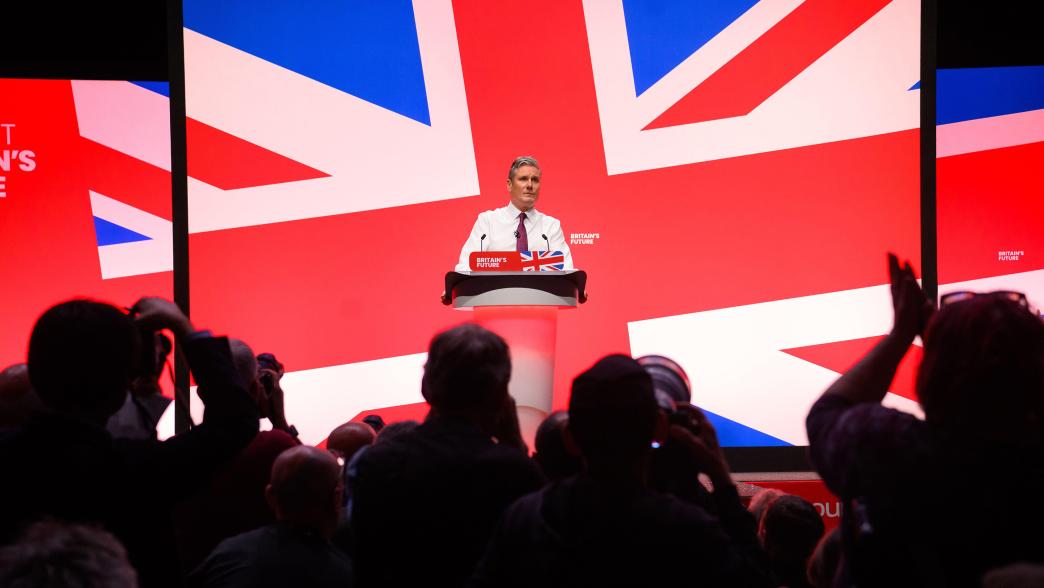Keir Starmer’s narrative has some major plot holes to fill
Labour still needs to set out its policies and a plan for implementation.

The Labour leader’s speech in Liverpool set out to de-risk his party for Conservative voters, but Hannah White says Starmer’s policy pitch – and how a future Labour government would deliver it – will need more substance added in the year ahead
Keir Starmer’s speech at the Labour Party conference had a clear objective – it was designed to provide a narrative convincing enough to persuade voters who swung to the Conservatives in 2019 to return to vote for Labour at the next general election. Starmer’s delivery was stronger and more natural than at previous conferences and went down well in the conference hall, but the question remains whether he has done enough to set out a positive reason to support Labour rather than just make a case for rejecting the Conservatives.
A limited policy offer was partly designed to ‘de-risk’ Labour for Conservative voters
It was clear from the pre-briefing of Starmer’s speech that it was not going to be packed with new policy proposals. Even the most concrete policy announcement – the 1.5m housing target – was an existing commitment to match the target already set by the government. The commitment to ‘bulldoze’ the planning system to deliver these houses was intended to show resolve without identifying specific losers – that resolve will need to be steely if a future Labour government is to succeed with a project with which many previously have failed.
Starmer’s speech had a more subtle objective – designed to persuade longstanding Conservative voters that when the election happens they can safely stay at home and risk a Labour government winning. The Labour leader made a direct appeal to Conservatives to switch to his party, purposely focusing on themes of security and highlighting priorities traditionally popular on the right: fighting for the union, defending family life, keeping taxes down and building a positive relationship with business. Ensuring Labour does not appear threatening to Conservative values in swing and marginal seats, as part of a strategy to keep them at home if they won’t vote Labour, will be a core part of Labour’s approach over the coming year.
The five missions may be evolving
Starmer’s speech made reference to his pre-existing narrative framework: the five missions which he has pledged will be the priorities for a new Labour government. And he kept returning to the idea of ‘mission government’ as part of his pitch for over a decade in power. This was interesting given that shadow ministers had been notably absent from the numerous fringe events designed to explore the idea of mission-led government, leading to some speculation that Starmer was planning to move away from the missions as a framing of Labour’s key priorities.
One reason suggested for this has been that missions have apparently achieved little traction with focus groups. At the same time there has been internal uncertainty about how the missions should be defined – what policies they should include and what they leave out. There are also questions about who will lead work against each of the five missions and what role other shadow cabinet ministers will play – with particular concern among those who do not see their own brief reflected among the five priorities. And there are questions about how Labour would need to rewire Whitehall to deliver mission-led government.
Starmer needs to develop policies – and plan for their implementation
Labour’s latest social media offering – a video identifying a single major policy commitment against each of the five missions, and personalising each with a human story illustrating its significance –may provide an indication of how Starmer now plans to communicate his approach to the public.
With the possibility of an election as soon as May 2024 – although the autumn of next year remains more likely – Labour needs to ensure its policy proposals are well developed with clear thinking underway about implementation. Years of preparation went into developing key priorities ahead of the 1997 election, and as Labour figures acknowledged at numerous fringe events, in the current economic climate Labour is looking for low-cost options.
Considering how to organise government to deliver against the missions will be key. Labour’s priorities – like many of the thorny problems facing government in the 21st century – cut across the responsibilities of different government departments and levels of government, but Whitehall is notoriously poor at managing cross-cutting priorities. An early task for Starmer’s new chief-of-staff Sue Gray is reported to be how to rewire Whitehall to address such weaknesses. Her thinking should be informed by the findings of the Institute for Government’s Commission on the Centre of Government, which is learning lessons about what has worked well elsewhere and in the past and make recommendations about how to create a more strategic centre.
Keir Starmer appears to have found a narrative that worked for his MPs and the party members. But with a general election drawing ever closer, there are still a number of major plot holes that Labour must fill if the electorate is to be convinced.
- Keywords
- Official opposition Party conferences
- Political party
- Labour
- Position
- Leader of the opposition
- Public figures
- Keir Starmer
- Publisher
- Institute for Government